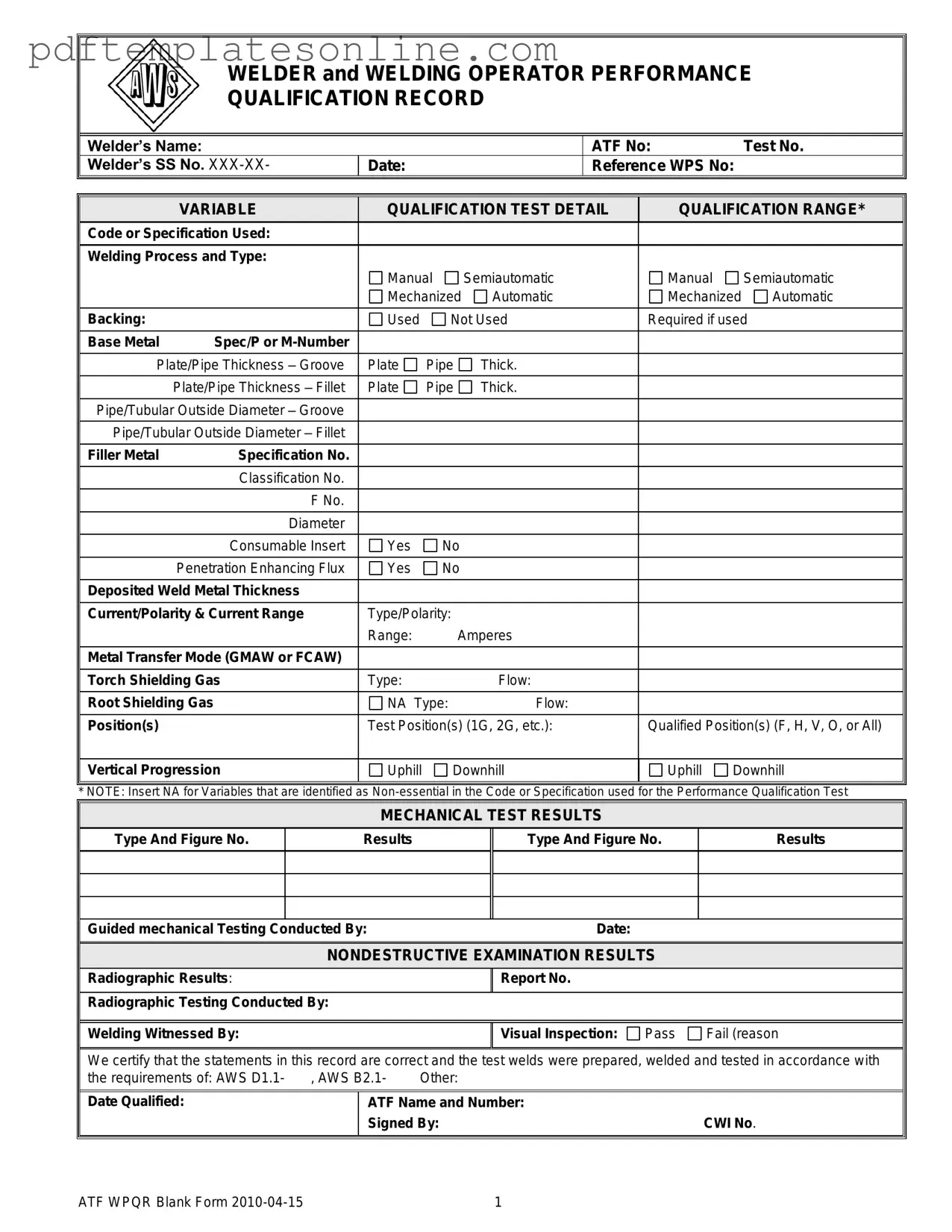Filling out the Welder Performance Qualification Record form can be straightforward, but several common mistakes can lead to issues. One frequent error is leaving out the Welder’s Name. This information is essential for identifying the individual who completed the qualification. Without it, the record may not be valid.
Another mistake involves incorrectly entering the Social Security Number. The SSN must be accurate to ensure proper documentation and verification. A simple typo can cause significant problems in record-keeping.
People often forget to include the Test Number and the Reference WPS Number. These numbers are crucial for tracking the specific tests conducted and ensuring compliance with the appropriate welding procedures. Omitting them can create confusion and hinder the qualification process.
Additionally, many individuals overlook the importance of specifying the Welding Process and Type. This section must clearly indicate whether the process is manual, semiautomatic, or automatic. Inaccuracies here can lead to misinterpretations of the welder's capabilities.
Another common error is failing to indicate whether Backing was used. This detail is significant because it affects the quality and integrity of the weld. Not specifying this can result in misunderstandings about the welding conditions.
When it comes to the Base Metal Specification, individuals sometimes neglect to provide the correct P or M numbers. These specifications are vital for ensuring that the right materials are used and that the welding process meets industry standards.
People may also forget to fill out the Deposited Weld Metal Thickness section accurately. This information is necessary for assessing the weld's strength and performance. An incorrect measurement can compromise the entire qualification.
Lastly, many individuals do not double-check the Visual Inspection results. It is crucial to confirm whether the weld passed or failed and to provide reasons for any failures. Neglecting this step can lead to misunderstandings and potential safety issues.
